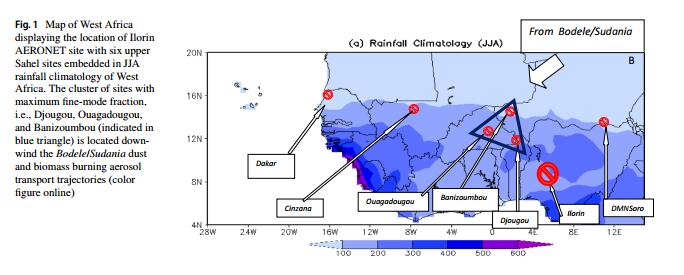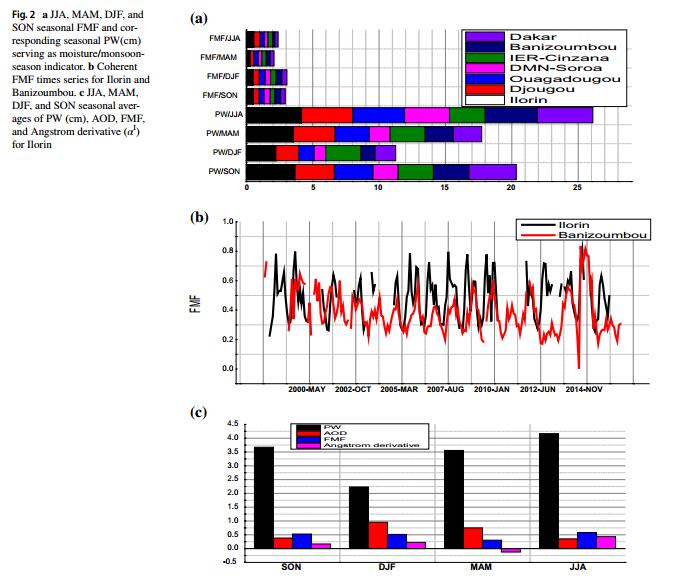最新科研进展
Fine-Mode Aerosol Loading Over a Sub?Sahel Location and Its Relation with the West African Monsoon
Authors:
Okechukwu K. Nwofor1 · Victor N. Dike1,2,3 · Zhaohui Lin2 · Rachel T. Pinker4 · Nnaemeka D. Onyeuwaoma5
1 Atmospheric Physics Group, Department of Physics and Industrial Physics, Imo State University, PMB 2000, Owerri, Nigeria
2 International Center for Climate and Environment Sciences, Institute of Atmospheric Physics, Chinese Academy of Sciences, Beijing 100029, China
3 Energy, Climate and Environment Science Group, Imo State Polytechnic Umuagwo, Ohaji, PMB 1472, Owerri, Imo State, Nigeria
4 Department of Atmospheric and Oceanic Science, University of Maryland, College Park, Maryland, USA
5 Center for Basic Space Science (CBSS), National Space Research and Development Agency (NASRDA), Federal Ministry of Science and Technology, University of Nigeria, Nsukka, PMB 2022, Nsukka, Enugu State, Nigeria
Abstract:
The aerosol fne-mode fraction (FMF) at the sub-Sahel AErosol RObotic NETwork (AERONET) site at Ilorin (8°32′N; 4°34′E) is found to be the highest (FMFmean=0.487) compared to six upper Sahel AERONET sites. The fne-mode aerosol population at the site dominates the coarse mode in core West African Monsoon months of June–July–August (FMFmean= 0.581; Angstrom exponent derivative=0.44). Correlations (r) of aerosol optical depth (AOD) time series with corresponding seasonal zonal wind (ZW) and meridional wind (MW) speeds of the European Centre for Medium-Range Weather Forecasts at the seven AERONET sites reveal a uniquely strong positive value (r= 0.6) of wet-season AOD and MW at Ilorin. The wet-season FMF distribution at the site is bimodal with a broad mode (peak center=0.685; half-width=0.521) attributed to a wide range of industrial/urban aerosols and a narrow mode (peak center=0.338; half-width=0.136) attributed to fne dust aerosols, while the dry-season distribution is mono-modal, attributed to a fairly broad dust/biomass burning aerosol mixture (peak center=0.484; half-width=0.394). These are corroborated with 7-day back trajectories calculated for core wet- and dry-season months over 2 years indicating mainly high altitude maritime and continental air masses in the wet season and lower altitude Sahara and Sudanianair masses in the dry season. Comparison of inter-annual rainfall and FMF trends indicates coherence of intensifying rainfall in traditional dry-season months (December, January, and February) with decreasing FMF distribution means and increasing FMF distribution widths which are consistent with reducing dust and biomass burning aerosols and growing industrial and urban aerosol sources.
Keywords:
Fine-mode aerosol · WAM · Ilorin · AERONET · Sahel


Citation:
Nwofor, O.K., Dike, V.N., Lin, Z. et al.: Fine?Mode Aerosol Loading Over a Sub?Sahel Location and Its Relation with the West African Monsoon, Aerosol Sci Eng (2018) 2: 74.
https://doi.org/10.1007/s41810-018-0024-6
